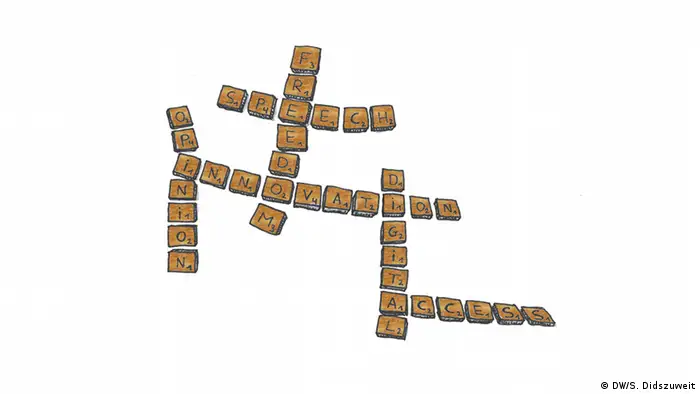In focus
Digitally innovating media development
Innovation is one of the buzzwords connected to digital technologies. But going digital does not make a media project "innovative." The question is how does a new element – digital or not – help strengthen Article 19?
Sometimes innovation can mean reinventing the wheel. We define innovation as introducing valuable elements to a respective media environment. For media development, this added value must contribute to the strengthening of Article 19. Thereby, a new project can be a copy of an existing one – and not be innovative at all – in one country, while bringing an important element of innovation to another. The crucial question is: does a project manage to strengthen freedom of speech and access to information for the population in ways new to a country?
Using this understanding, media innovation can occur in a variety of contexts and is not restricted solely to digital projects. Furthermore, even if a project makes heavy use of digital technologies, the innovation can be analogue. In Cambodia, for example, data journalists put their findings on USB sticks and present them in remote villages. It is this process of driving out to communities disconnected from the digital flow of information via dirt roads that makes a data journalism project innovative since it enables rice farmers to gain access to digital data that is important to their everyday lives. The analogue method of distribution helps bridge the digital divide. Nevertheless, digital technologies have made it possible to collate the information in the first place.
Thus, innovation does not necessarily mean game-changing inventions like Web 2.0 or the smartphone. Distributing digitally gathered data on paper is a valuable enough innovation if it strengthens the human rights of freedom of expression and access to information for certain groups within society substantially. This can help foster inclusion by ensuring the poor and marginalized have the means and opportunities to participate.
Strengthening media organizations or NGOs institutionally is another indirect way that innovation can help foster freedom of speech and access to information. Media outlets will become financially more sustainable if they find, for instance, new pay models. This can help generate resources to raise the quality of their reporting or make them less prone to editorial interference by government or business interests. One role of media development organizations is therefore to establish ways to learn from innovation globally – be it North to South, South to South, or South to North.
What does this mean for media development organizations?
Media development organizations operate in countries whose media ecologies do not enable the population to exert the rights inscribed in Article 19 to its full extent. Supporting change requires innovations in the way the media ecology works. Be it with the use of digital technologies or without. In recent years, many new possible partners in cultivating Article 19 through the use of digital technologies have appeared. However, media development organizations find it increasingly difficult to decide which projects are worth supporting and which are not. It is therefore crucial to understand how to support innovation from within or from outside of the media environment if they want to foster change that is deemed necessary to strengthen the human rights of freedom of expression and access to information.
The concept of innovation can be a useful tool in this context. In determining potential partners, it is crucial to ask in which ways projects are exploring new methods to enable the exertion of freedom of expression and access to information that did not exist in their country’s media ecology before. Of course, this applied in the pre-digital age as well. However, the value of digital technologies for freedom of expression and access to information is much less understood. Media producers, technology and potential users with their respective media practices shape media innovation collectively. The rise of digital technologies makes it more difficult to determine how innovative potential partners are in their approaches. Media development organizations have to develop new capacities to understand all three constituents of projects better in order to successfully support their partners in promoting Article 19.
DW recommends
WWW links
- Date 15.03.2016
- Author Erik Albrecht and Roslyn Kratochvil Moore
- Feedback: Send us an e-mail. Please include your name and country in your reply.
- Print Print this page
- Permalink https://p.dw.com/p/1ID0h
- Date 15.03.2016
- Author Erik Albrecht and Roslyn Kratochvil Moore
- Send us your feedback.
- Print Print this page
- Permalink https://p.dw.com/p/1ID0h

